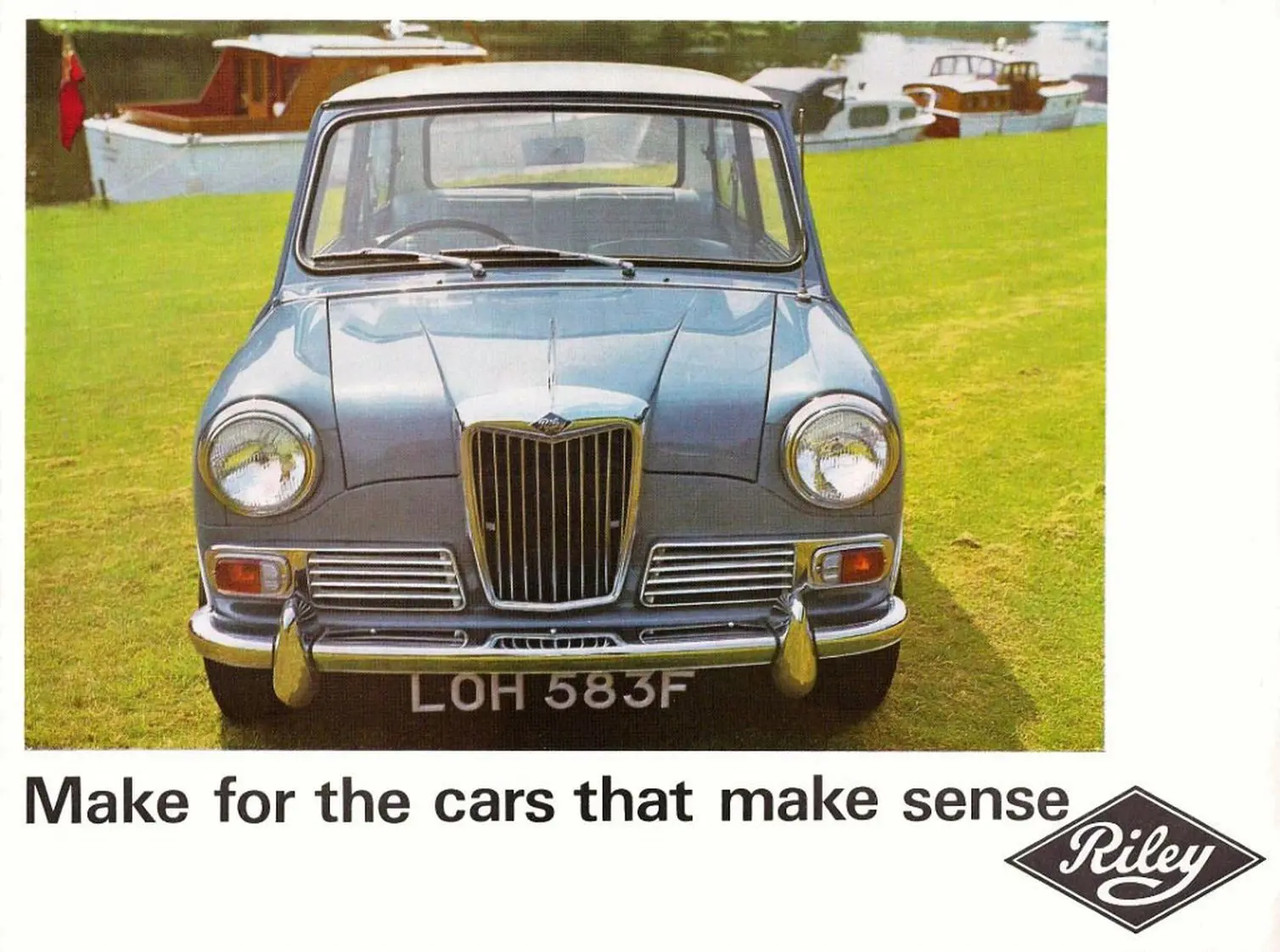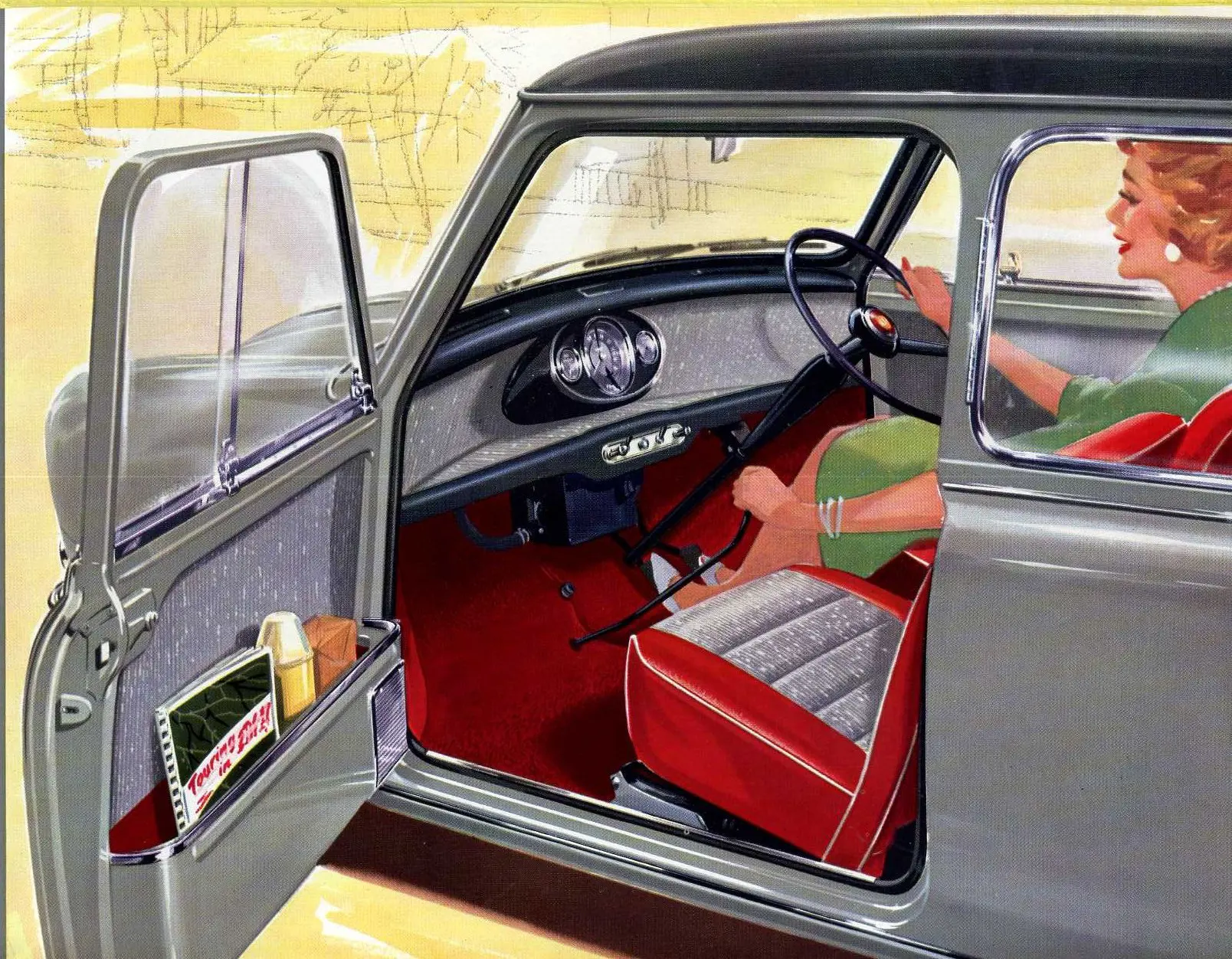THE RILEY ELF AND WOLSELEY HORNET AT SIXTY
29 December 2021
19 facts about one of the most intriguing members of the Mini family:
- The Wolseley Hornet and Riley Elf debuted on the 12th of October 1961. Dick Burzi created their distinctive styling.
- The Hornet was the first front-wheel-drive Wolseley; the second was the 1965 1100.
- The British Motor Corporation originally intended to use the Imp name for the Riley.

- The price of the Wolseley was £672 1s 5d, and the Riley cost £693 18s 11d. The latter featured a full-width facia with twin glove boxes.
- The Elf and Hornet were eight inches longer than a standard Mini.
- The Wolseley took its name from the pre-war six-cylinder lightweight sporting saloon.
- Alec Issigonis was not impressed, complaining about “gimmicks”. Nor was the great motoring writer L J K Setright, who ranted about “those small-minded snobs who found the idea of a Mini intriguing but the name of Austin or Morris offensive and the evidence of austerity”.
- The Mk. II versions of 1963 boasted a 998cc engine in response to complaints about the Elf/Hornet’s lack of power.
- Autocar found the Hornet Mk. II to be “a very handy and likeable little car”.
- Bill Boddy of Motor Sport regarded the Elf Mk. II as “a useful business executive’s town-car”.
- Viking Performance Cars of Suffolk devised the extremely desirable Hornet Sport convertible, but production ran only from 1963 to 1964. One problem was that they cost £200 more than its Wolseley parent model.
- In 1963 Speedwell Performance Conversions offered an ‘Executive Riley’ powered by a 1,150cc version of the A-Series engine with twin SU carburettors and a high-lift camshaft. The top speed was a formidable 107 mph, but the price was a steep £825.

- As for the Riley, it was “a perfect dream of a car” and “Magnificent Motoring in Miniature”.
- One Elf advertisement posed the vital question “Why do Riley owners look so dashed superior?”.
- In 1966 Heinz commissioned Crayford Engineering to build 57 Wolseley Hornet Convertibles as prizes for their “Greatest Glow on Earth” soup competition.
- In that same year the Mk. III featured reclining front seats, fresh air vents and a Cooper style remote control gear change instead of the earlier ‘magic wand’ lever.
- The Mk. III’s winding windows were a ‘first’ for a British Mini, although they featured on Australian built models in 1965.
- In 1967 BMC South Africa introduced the ‘Wolseley 1000’, which combined the Hornet nose with the standard Mini body. Two years later, it was succeeded by the ‘ 3’, which conversely blended the Mini nose with the Hornet’s body
- In late 1969 the Mini Clubman replaced the Hornet/Elf after 28,455 Wolseleys and 30,912 Rileys.
